Part of a series of articles titled Park Paleontology News - Vol. 13, No. 1, Spring 2021.
Article
Revisiting The 1940 Badlands Expedition

Ed Welsh, Park Ranger (Interpretation)
Badlands National Park, South Dakota

Photo by E. Welsh.
This story is a combination of historic accounts and modern re-exploration intertwined with the history of Cenozoic paleontology and current, ongoing research. I currently work at Badland National Park, and much of my research interests are aligned to equivalent-aged sites in regard to the historic expedition detailed here. I only include my background, interests, and research to emphasize the importance of the 1940 Badlands expedition in regards to understanding Badlands paleoecology and the evolution of the North American faunal landscape during the Oligocene.
The ancient fauna of the White River Badlands has been my primary research interest since my academic career began in 1999. I had spent most of my field, lab, and collections time working with White River Badlands fossils (~35–30 million years ago; late Eocene–early Oligocene epochs), starting from the beginning of my undergraduate program in Nebraska and moving on to my graduate work in South Dakota. My knowledge on White River fossils is continually expanding as I learn more through working in museum collections, reexamining specimens that have been previously collected without further examination or generally overlooked. Much of my interests have focused on the Whitneyan North American Land Mammal Age (NALMA), approximately 32–30 million years ago, along with the preceding and following faunal transitions. The Whitneyan NALMA is interesting to me, because sites are notoriously rare or hard to reach, which has left significant knowledge gaps in the Oligocene fossil record. However, a significant amount of material representing Whitneyan faunae with good stratigraphic control had been collected by South Dakota School of Mines and Technology (SDSM) field crews and are housed in their collections, along with a virtually inversely limited published record. In the 2010 and 2011 field seasons, I was fortunate enough to participate in a permitted survey of the Palmer Creek area of Badlands National Park with a field crew from Cambridge University (2010) and Dartmouth College (2011), both led by Jason Moore. This was an expansive cooperative effort between these institutions, with support from Badlands National Park, and all at the request of the Oglala Sioux Parks and Recreation Authority (OSPRA). All entities and organizations pooled their efforts into the field work. The Palmer Creek area is home to the classic “Protoceras beds”, an informal, yet well-known, biozone described in the days of Henry Fairfield Osborn. Later, the fauna from this zone would be incorporated into creating the Whitneyan NALMA. While brushing up on my fossil knowledge from the area, I came across a National Geographic Magazine article from 1947 titled “Big Game Hunting in the Land of Long Ago” by Joseph P. Connolly and James D. Bump.
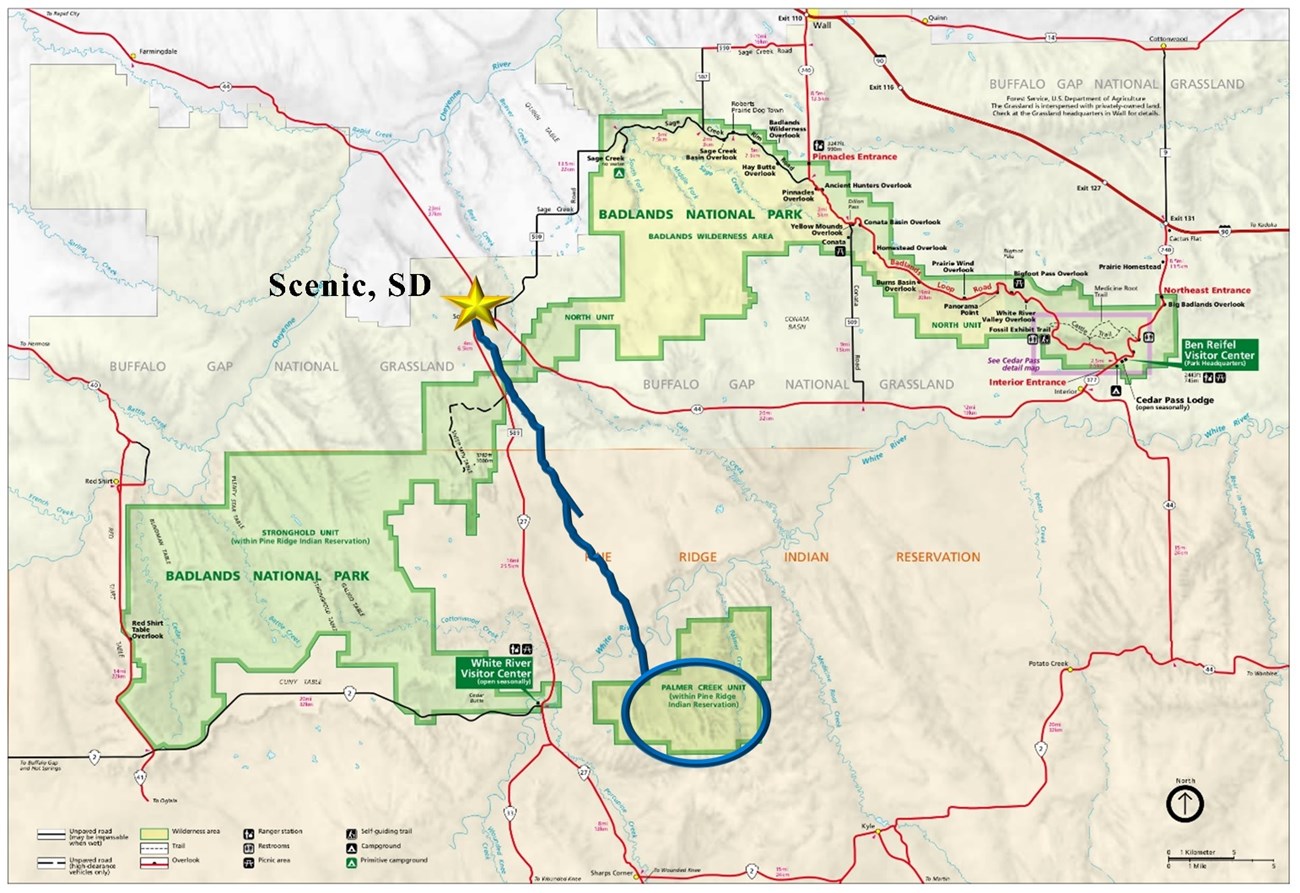
The National Geographic article detailed an expedition undertaken by the SDSM with support from the National Geographic Society in the summer of 1940. Of course, in the standard of National Geographic Magazine, the article was rich with photos. I recognized all the specimens showcased in the article. A rhinoceros skull I recognized from working in collections, the same for a large entelodont skull, and a bird egg on exhibit in the museum. There were also several location photos. I recalled that locality records at SDSM had some vague names in the style of “X miles E. of camp”, compounded by the frustration of knowing the impermanent location of “camp”. However, the National Geographic article had a photo of “camp” with landscape in the background. The hope was that we could use this article to recognize these sites and get a bearing on where the 1940 expedition was centered. On top of this homework, I learned that there was a surviving member of the 1940 SDSM field crew, by the name of Merle Crew, at an assisted living facility in Grand Junction Colorado. I was able to catch up with Merle via phone call. Merle’s story is continued through the rest of the article, intertwining with the history of paleontology at the time and continuing into current studies.
Merle Ellsworth Crew was born on April 3, 1920 and grew up near Interior, South Dakota, spending his formative years next door to the Big Badlands. Badlands National Monument would later be established in 1939, when Merle was ready for college. He was interested in fossils at an early age, making his first major discovery at the age of 15. Merle discovered a fossil dog skull in 1935, which he brought to the SDSM in Rapid City, South Dakota, where it has remained on display since its discovery. After high school, Merle continued his education at the SDSM, studying geology while also working in the paleontology preparation lab for forty cents per hour. He was invited to join an expedition to the Badlands in 1940, led by James D. Bump (SDSM) and jointly sponsored by the National Geographic Society and SDSM.
This was a critical time for mammalian paleontologists because the Wood committee formalized the NALMA system on January 1, 1941, a few months after the expedition. In its day, the foundation of the NALMA system was the prime framework for understanding provincial, terrestrial biostratigraphy. Previously, in the age of paleontologists such as Henry Fairfield Osborn, the White River Group was distinguished by Acme zones of characteristic and abundant White River chronofauna, including the “Titanotherium channels”, Lower through Upper “Oreodon beds”, and the “Leptauchenia beds”. Formalized stratigraphic subdivision of the White River Group’s broader lithologic units would not be established until 1955–1956, but informal subdivisions were used to help name the first round of NALMAs (e.g. Orella and Whitney members of the Brule Formation). The fossil record was established long before higher stratigraphic resolution and control. Serious study into the faunal progressions and transitions of North America’s paleoecological landscape was at last beginning to be refined and gain focus.
The mission of the 1940 SDSM–Nat Geo expedition aimed to collect remains from a set of greenish-gray river channel deposits in the “Leptauchenia beds” known as the “Protoceras channels”. Good, accessible exposures of fossiliferous river channel deposits are rare in the White River Group, and the SDSM crew focused their attention to these beds in particular because of the potential to find atypical fauna relative to the rest of the White River Group. During previous and brief excursions in the 1920s, Bump discovered one of the first atypical fossil dogs from the White River Group, a hypocarnivorous (diet less than 30% meat) dog he named Oxetocyon cuspidatus. Bump’s crew would enter the Pine Ridge Reservation going south from Scenic, South Dakota to their field location with special permission from the Oglala-Lakota tribal council and the Department of the Interior. The drive from Rapid City to Scenic started with about 43 miles of unpaved road then off-road about 33 miles to the field area, following underdeveloped trails. According to Crew, SDSM purchased brand new 1940 Chevrolet trucks and proceeded to put them to rugged work, including fording the White River at flood stage. These trucks were also used to back into outcrops because it was easier to lower heavy specimens downslope into the truck bed. Nine men dedicated their time for 3 months of a Badlands summer field season. An army-style tent camp, sun-heated oil-drum shower, and a tapped freshwater spring 5 miles from camp were made for their accommodations. Breakfast and dinner were the only meals for the day with maybe an apple or orange for a snack-lunch in the afternoon. A dry creek bed next to the campsite was about the right size and shape for a baseball diamond, one of the more common recreational activities. Weekly supply runs to Rapid City did not completely deprive the crew of civilization.
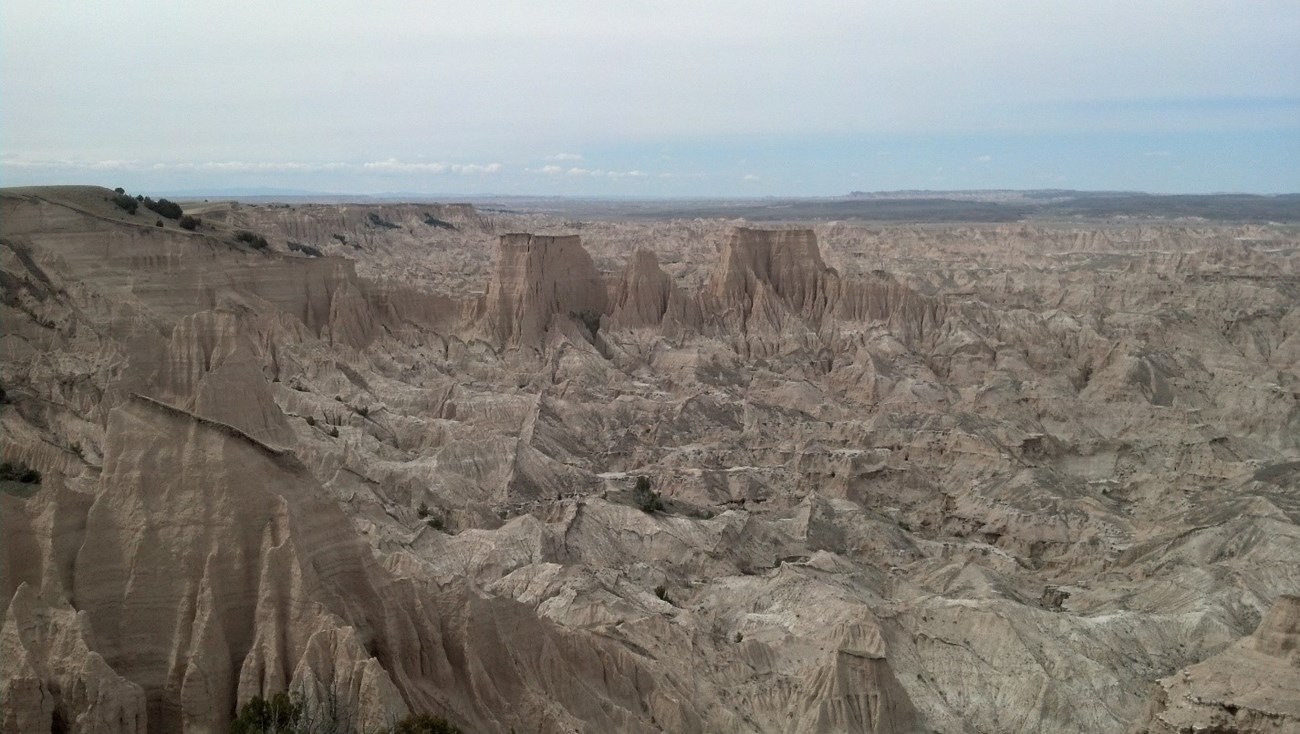
Merle graduated in 1942 and began military service in the Navy the following year. He spent 3 years stationed in Nevada but did end up on a landing craft at Omaha Beach in World War II. News of the SDSM–Nat Geo expedition was not reported until 1947, 7 years later, because of delays stemming from World War II. Joseph P. Connolly, the SDSM President, and James D. Bump, SDSM’s Director of the Museum, penned the article titled “Big Game Hunting in the Land of Long Ago” for National Geographic Magazine, providing numerous photos of work in the field and in the lab. The article showcased one photo of the crew at the field camp site with the National Geographic Society Flag behind them, and Merle Crew positioned in the center of the group. If one pays close attention to the photos, they will notice that every crew member has a pith helmet. The last photo in the article shows Merle prepping a large Archaeotherium skull, one of 194 catalogued specimens recovered from the expedition. Crew recalled collecting many large and heavy skulls or more complete skeletons, because the expedition focused most of their attention to the macrofauna. Microvertebrate material was collected, but the quantity pales in comparison to the larger mammals. Some of the more rare and atypical discoveries included bird material as well as several fossil bird eggs. Soon after the expedition, in 1942, Alexander Wetmore of the Smithsonian Institution, also on the Board of Trustees at National Geographic, described new genera and species of birds recovered by the SDSM–Nat Geo crew: Gnotornis arameillus (Aramidae) and Bathornis geographicus (Bathornithidae). The eggs have not been thoroughly studied, because detailed studies on fossil eggs and eggshells were not refined until the 1990s, but the specimens can be seen on display at SDSM. James Reid Macdonald would describe some of the mammals much later, which included the types of Nimravus altidens (synonymized with Nimravus brachyops) in 1955, the hedgehog Proterix bicuspis in 1951, and the primitive artiodactyl Leptochoerus supremus in 1955.
Table 1. Catalogued taxa from the 1940 SDSM–National Geographic expedition to the Palmer Creek area.
- AVES
- GRUIFORMES
- ARAMIDAE
- Gnotornis arameillus*
- BATHORNITHIDAE
- Bathornis geographicus*
- ARAMIDAE
- GRUIFORMES
- MAMMALIA
- LIPOTYPHLA
- ERINACEIDAE
- Proterix bicuspis*
- ERINACEIDAE
- LAGOMORPHA
- LEPORIDAE
- Palaeolagus sp.
- LEPORIDAE
- RODENTIA
- ISCHYROMIDAE
- Ischyromys sp.
- APLODONTIDAE
- Campestrallomys dawsonae
- CASTORIDAE
- Agnotocastor sp.
- ISCHYROMIDAE
- CARNIVORA
- NIMRAVIDAE
- Nimravus altidens* (= N. brachyops)
- AMPHICYONIDAE
- Daphoenus sp.
- CANIDAE
- Hesperocyon sp.
- NIMRAVIDAE
- PERISSODACTYLA
- EQUIDAE
- Miohippus sp.
- TAPIRIDAE
- Colodon cf. occidentalis
- Protapirus simplex
- HYRACODONTIDAE
- Hyracodon sp.
- RHINOCEROTIDAE
- Subhyracodon sp.
- EQUIDAE
- ARTIODACTYLA
- LEPTOCHOERIDAE
- Leptochoerus supremus*
- ANTHRACOTHERIIDAE
- Bothriodon sp.
- Heptacodon sp.
- Elomeryx armatus
- ENTELODONTIDAE
- Archaeotherium sp.
- TAYASSUIDAE
- Perchoerus sp.
- MERYCOIDODONTIDAE
- Merycoidodon sp.
- Leptauchenia sp.
- CAMELIDAE
- Paralabis sp.
- HYPERTRAGULIDAE
- Hypisodus sp.
- LEPTOMERYCIDAE
- Leptomeryx obliquidens
- PROTOCERATIDAE
- Protoceras celer
- LEPTOCHOERIDAE
- LIPOTYPHLA
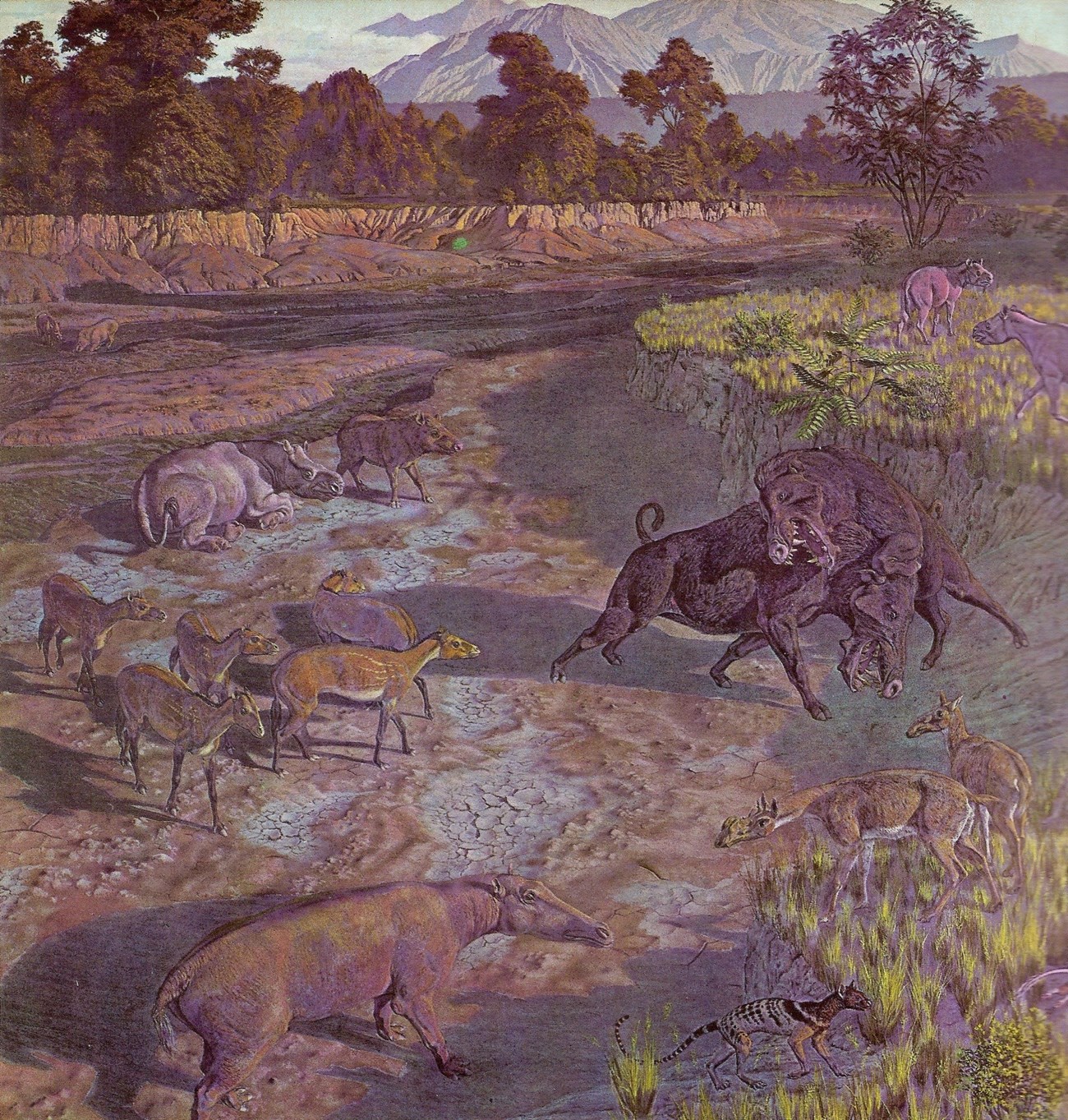
Section of the Smithsonian mural “Mammalian Fauna of the Oligocene” by Jay Matternes exhibiting the characteristic “Protoceras channels” fauna. In the river bed, starting at 12 o’clock going counterclockwise: peccary (Perchoerus), rhinoceros (Subhyracodon), 3-toed horse (Miohippus), anthracothere (Elomeryx), early dog (Hesperocyon, though “Mesocyon” temnodon and Cynodesmus thooides were more commonly recovered from the Palmer Creek area), Protoceras celer male (left) and female (right), Archaeotherium (though SDSM has specimens labeled as Megachoerus on display).
The major boon of the 1940 SDSM–Nat Geo expedition was the collection of a more comprehensive record within a specific stratigraphic interval representing a characteristic Whitneyan fauna. The 1941 Wood committee defined the Whitneyan NALMA based on a limited record from a geographically and stratigraphically broad setting. One of the issues with early studies in the White River Group was the focus on narrowed taxa or taxonomic groups over detailed faunal overview. Well-established descriptions of faunal components provided a false sense of security of paleoecological knowledge of the Big Badlands of South Dakota. With the Palmer Creek “Protoceras channels” fauna, priority went towards naming types, while other taxa might have been included in taxonomic overviews with notes on provenance of referred specimens. Aside from these instances, the collective “Protoceras channels” fauna remains understudied or undescribed. However, the collections exist and await further in-depth study. Eventually this research area became part of the South Unit of the redesignated Badlands National Park in 1978. The 2010 and 2011 surveys into the Palmer Creek area provided further insight into why the “Protoceras channels” were so intriguing to previous field crews. The White River Group is famous for its abundance of oreodonts, small, sheep-like camel-relatives. It is difficult to explore the Badlands without finding something that was from an oreodont. The term “Oroeodon beds” was used long before any geologic name was designated. The Palmer Creek area had oreodonts, but they were rare. The 1940 crew only collected 3 or 4 oreodonts out of nearly two hundred specimens. Instead, the fossiliferous units were rich in anthracotheres (hippo-relatives), peccaries, and the characteristic and unusual-looking Protoceras, the namesake for the local Acme zone. Protoceras is exceptionally abundant in this area, but rare or poorly preserved anywhere else. Only two specimens of Protoceras were ever reported from the North Unit, the original boundaries of Badlands National Monument. I have worked at Badlands National Park for nearly a decade, and aside from the handful of previously published specimens, I have only seen a few teeth from two specimens anywhere other than Palmer Creek. We found bird material, much like the 1940 crew, and one of the more interesting surprises was fish vertebrae. We were working in river sediments, so there should be no surprise, but fossil fish are notoriously rare to nonexistent elsewhere. Reviewing the collections and witnessing the specimens in the field survey made it clear that this area was in a world apart from similar-aged sites elsewhere, making the area paleoecologically unique. It was abundantly clear why the SDSM–Nat Geo expedition made such a rough trip to this specific area as opposed to more conveniently accessible Badlands exposures.
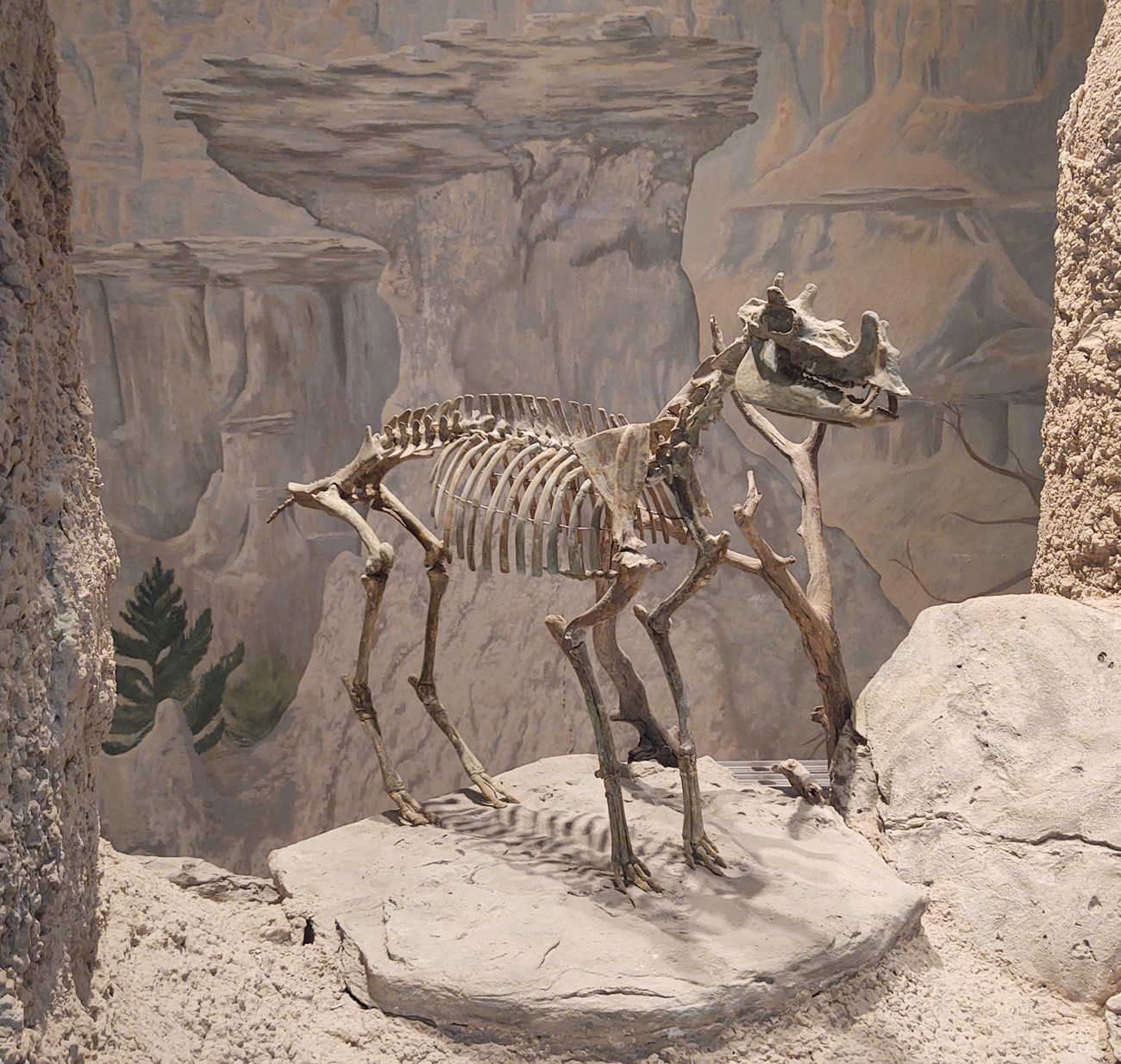
After World War II, Merle taught at the school in Interior, South Dakota in 1948–1949. He earned a job with the Atomic Energy Commission in the U.S. Department of Energy, which located him to Grand Junction, Colorado. Merle never returned to South Dakota and no longer pursued his interests in paleontology after his teaching days. Merle passed away on February 15, 2015 at the Fountains of Hilltop assisted living facility.
Jason Moore and I were out on one of the last days of survey in the 2011 field season when we started finding old sardine cans. We figured that we must be close to where the SDSM–Nat Geo crew were camped, or at least one of the field sites near the old camp site. I pulled out my copy of the campground photo and was able to find the outcrop in the background, coming to the realization that everyone was walking by or around the campsite every day for a few weeks during both years of survey. Aside from feeling like the facepalming geniuses we were, it was a massive relief to have some closure on where the SDSM–Nat Geo crew based their operations. We realized the difficulty in relocating the campsite was due to the original photo having been taken after climbing up a significant section of the opposing outcrop wall. Meanwhile, SDSM has recently relocated the museum collections into a new and improved facility on campus. A member of the museum staff was clearing out old storage above one of the offices and serendipitously found the original National Geographic Society flag that flew at the 1940 Badlands field camp. After we returned from the field, I contacted Sally Shelton, the Collections Manager at the time, and informed her about the discovery. I asked if it would be okay to borrow the National Geographic flag and photograph the current crew with the flag. After getting Sally’s approval, I rushed to Rapid City to pick up the flag and transported it safely back to the Badlands. My former graduate advisor at SDSM, Darrin Pagnac, and the newly hired Museum Director and Department Chair, Laurie Anderson, were able to join the following day with a photographer from SDSM. The major differences between the 2011 crew and the 1940 SDSM crew were the inclusion of women and the lack of stylish pith helmets. Not long after this, Sally informed me about Merle, and I was lucky enough to have a few short conversations with him about his experiences in the Badlands detailed in this article.
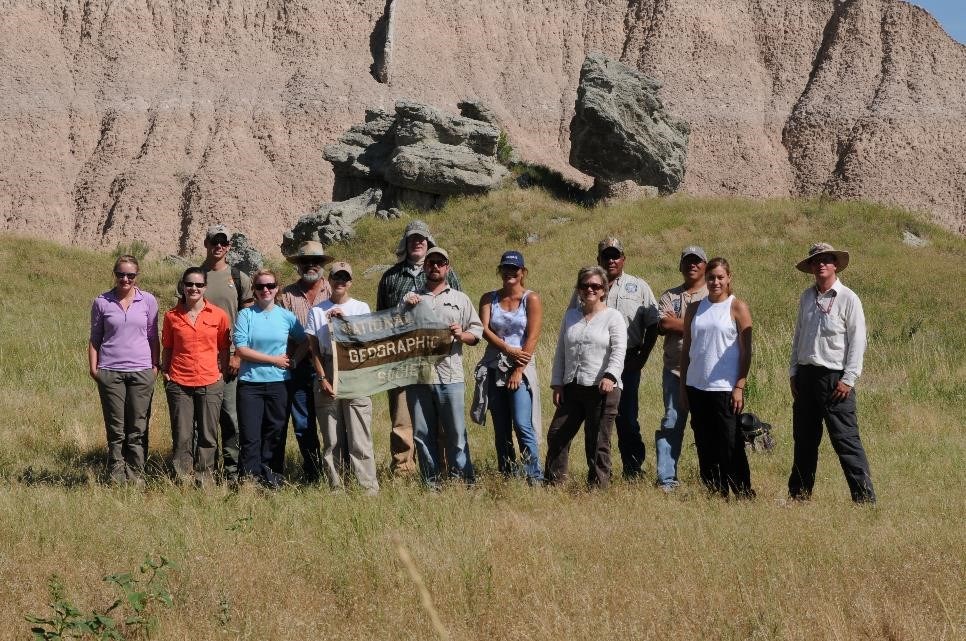
The 2011 Palmer Creek survey crew with Ellen Starck and Ed Welsh (center) holding the 1940 expedition flag at the original expedition’s campsite. Other crew members included students and faculty from Dartmouth College (Jason Moore at far right), BADL seasonal paleontology crew (including Ellen Starck), Emmett Evanoff (behind Ellen and slightly left; stratigrapher from the University of Northern Colorado at Greeley), SDSM (Darrin Pagnac and Laurie Anderson), and OSPRA field crew (including Trudy Ecoffey, immediately left of Ed). Photo courtesy of SDSM.
A couple of years before Merle passed, we had a conversation on the small fossil dog skull he collected when he was a teenager. I was researching canids from a Whitneyan site in the Poleslide Member, elsewhere in South Dakota. The area of interest had subsequently been collected by Morris Skinner for the Frick Collection (American Museum of Natural History) in New York and revisited by thorough collections made by successive field crews from SDSM and Badlands National Park. One of the specimens that came from this field area was the little dog skull Merle discovered. The skull was labeled Pseudocynodictis gregarius, later reclassified as Hesperocyon gregarius, the most common carnivore in the White River Group. However, broadened and enlarged molars in this specimen were noticeably different than typical hypercarnivorous Hesperocyon, much like all other dogs I was studying from the same area. It turned out that Merle had collected a near flawless skull of the omnivorous Archaeocyon leptodus, one of the earliest representatives of the dog subfamily Borophaginae. Borophagine dogs are famously known from the large, hyena-like bone crushers in the late Miocene. Some of the last of the most famously known species, like Epicyon haydeni, would be as large as modern grizzly bears. In contrast, the earliest borophagines from the Oligocene were tiny, represented by some of the smallest wild dogs that have ever lived, and not so well-known in paleontological pop culture. Even though Archaeocyon is already known from the Brule Formation, it is typically known in greater abundance in the younger sediments of the Arikaree Group. Merle stumbled into a site that was rich in borophagines, particularly Archaeocyon, and lacking Hesperocyon, atypical of White River localities. Even the Palmer Creek area was poor in Hesperocyon material, and more abundant in larger hypercarnivorous dogs, like “Mesocyon” temnodon and Cynodesmus thooides. His discovery marked the earliest collection into the oldest major diversification events in the evolution of early dogs. In the few discussions we had, Merle was always a bit nonchalant about his involvement with the SDSM–Nat Geo expedition, because he didn’t feel that he was making a significant scientific impact while working on the same larger mammals as everyone else in the crew. He was particularly amused that one of the most significant discoveries he made was when he was a kid in his proverbial backyard, though I would hesitate to discount Merle’s contribution through his college years. Merle Crew’s involvement with paleontology in South Dakota, amateur or professional, has helped and will continue to help clarify our understanding of the Whitneyan fauna and evolving ecological landscape of Oligocene North America.
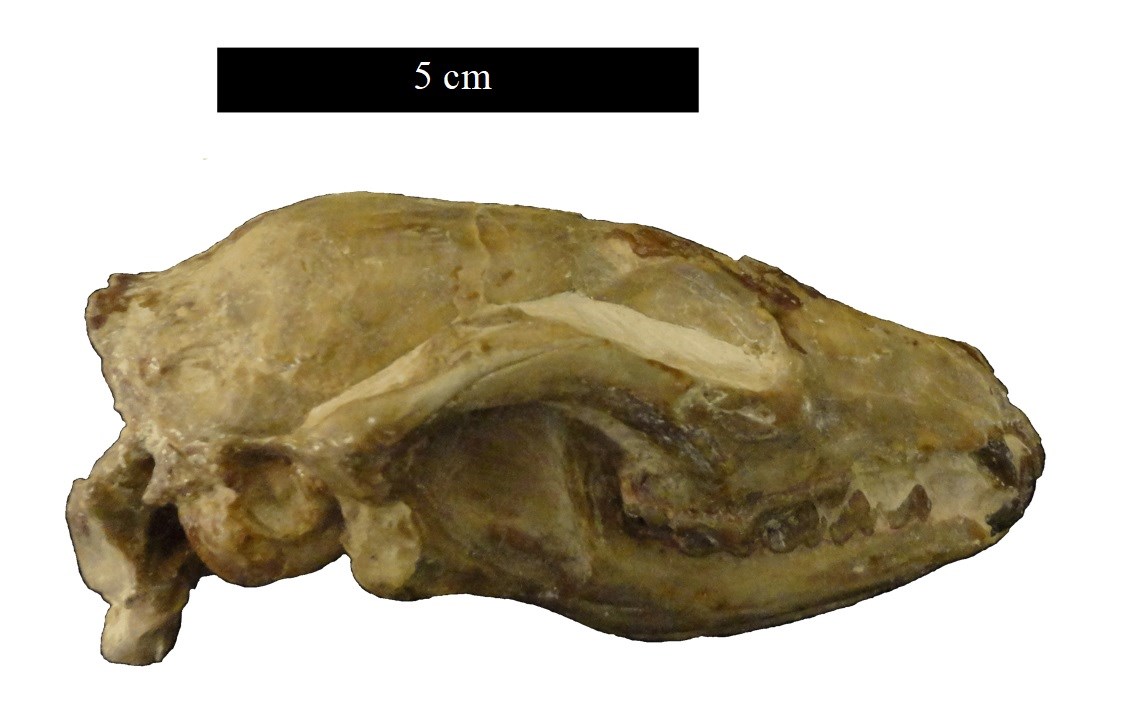
References
Connolly, J. P. and Bump, J. P. 1947. Big Game Hunting in the Land of Long Ago. National Geographic Magazine 91(5):589–605.
National Geographic Magazine January 1947 : Free Download, Borrow, and Streaming : Internet Archive
Digging up the Past with Merle Crew. 2013. The Hardrock. South Dakota School of Mines & Technology. Winter 2013, pp. 22–24.
Hardrock magazine Winter 2013 edition by South Dakota School of Mines and Technology
Wood II, H. E., R. W. Chaney, J. Clark, E. H. Colbert, G. L. Jepsen, J. B. Reeside, and C. Stock. 1941. Nomenclature and correlation of the North American continental Tertiary. Bulletin of the Geological Society of America 52(1):1–48.
Related Links
- Badlands National Park, South Dakota—[Geodiversity Atlas] [Park Home]
- NPS—Fossils Through Geologic Time
- NPS—Fossils and Paleontology
- NPS—Geology
Last updated: March 15, 2021
